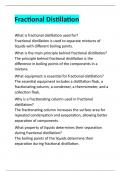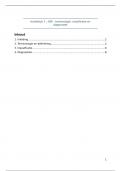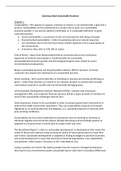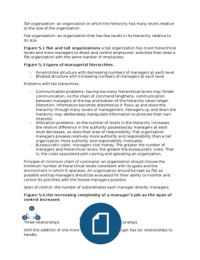Assault
When Simon aggressively shouted at Toby to get lost, he may have
committed an assault contrary to s39 of the Criminal Justice Act 1988
(CJA). Common assault is an act by which a person intentionally or
recklessly causes another to apprehend immediate, unlawful personal
violence. There does not have to be any contact, the offence can be
committed using words alone: Constanza (1997). Silence can also amount
to an assault: Ireland (1998).
The MR for an assault is either an intention to cause another to fear
immediate unlawful personal violence, or recklessness as to whether
such fear is caused. Applying this to the facts, Simon aggressively
shouted at Toby to get lost. The prosecution will have to prove that Simon
caused Toby to apprehend immediate physical violence as a result of the
words used and Simon’s demeanour at the time of making the threat.
Whether Simon intended the comment he made to be a threat or not does
not matter. The positive communication that he made to Toby means that
he was reckless as to whether he caused Toby to fear immediate personal
violence or not.
In respect of Simon there is no defence to common assault that he can
use.
Ollie’s liability – Battery:
When Ollie punched Paul, he committed a battery contrary to s39 of the
CJA. Ollie intentionally or recklessly: Venna (1975), Savage; Parmenter
,(1989) inflicted personal violence on Paul by punching him to the face:
Rolfe (1952). Paul did not give Ollie permission to assault him, therefore
the contact was both physical: Ireland; Burstow (1998) and unlawful.
However, Ollie injured Paul’s nose so has caused him physical injury. Due
to the level of injury caused this would probably amount to an offence
contrary to s47 of the Offences Against the Person Act 1860 (OAPA).
S47 OAPA concerns an assault occasioning Actual Bodily Harm (ABH)
and is the intentional or reckless infliction of unlawful violence upon
someone: Savage; Parmenter (1991). ABH refers to an assault which
interferes with the comfort of the victim and is more than transient or
trifling: Miller (1954) and T v DPP (2003), and there has to be an injury:
Chan-Fook (1994).
The injury sustained by Paul was a bleeding nose. This would constitute
an injury which was more than transient or trifling and would interfere
with his comfort. Ollie should have been aware that there was a risk that
his actions towards Paul could cause him injury. Ollie could be liable for a
s47 ABH against Paul.
Kemal’s liability:
When Kemal pushed Ollie, he committed a battery as set out above.
The injury sustained by Ollie was a deep gash to his wrist requiring
internal and external stitching, Kemal could be liable for Grievous Bodily
Harm (GBH) contrary to s18 or 20 OAPA.
,any other person, either with or without any weapon or instrument. A
wound consists of a break to both layers of skin: Eisenhower (1984). GBH
means ‘serious harm’: Smith (1961), Wood 1830 and Bollom (2004).
There must be foresight (or intention) of causing some harm: Mowatt
(1968).
S18 OAPA is unlawfully and maliciously by any means whatsoever
wounding or causing any GBH to any person with intent to do GBH. The
AR of the offence is the same as that for s20 OAPA. The difference lies in
the MR of the offences. For a s20 offence there must be an intention or
recklessness as to some harm. For a s18 offence there must be a specific
intention to cause GBH; this makes s18 a more serious offence.
When Kemal pushed Ollie, it was an assault. The injury sustained by Ollie
was a deep gash to his wrist which required internal and external
stitching. This injury would substantiate an offence contrary to s18 or
s20 OAPA. When Kemal pushed Ollie, he did not intend to cause him
GBH. However, he should have been aware that there was a risk that his
actions could cause some physical harm: Mowatt (1968). As Kemal’s
actions were reckless not intentional, he could be liable for a s20 GBH
against Ollie.
2. ESSAY ON CONSENT:
The law dictates that we impliedly consent to physical contact in
everyday life: Collins v Wilcock (1984), where touching someone to get
their attention was held to be ‘everyday’ contact.
, The general rule is that consent can be defence to assault or battery:
Donovan (1934), A-G’s Reference (No 6 of 1980) (1981). These are both
offences which require no proof of any harm being caused to the victim
(V). However, the courts are stricter when a degree of harm is caused,
therefore consent is only available in acceptable situations to charges of
assault occasioning actual bodily harm (ABH), inflicting grievous bodily
harm or causing grievous bodily harm with intent (GBH): Brown (1993).
Any consent must be given freely. It will be invalidated if obtained by
force, threat of force, duress or coercion.
There are some socially acceptable situations where the law allows
consent to the deliberate infliction of harm when it is in the public
interest: A-G’s Reference (No6 of 1980). Medical intervention and
cosmetic surgery allows consent for the procedure to be carried out:
Corbett v Corbett (1971), Bravery v Bravery (1954). The same applies to
tattooing and piercing. They are also permissible to protect individual
autonomy: DPP v Smith (2006), Wilson (1996). Injuries caused during
properly regulated contact sports are not subject to criminal sanction
because sport per se is a socially acceptable hobby which is in the
greater public interest: Barnes (2004). Similarly, unintentional injuries
sustained by willing participants to rough horseplay are deemed to be
consented to: Jones (1986), Aitken (1992).
A problematic area for the courts is when injuries are inflicted during
sexual activity. In Wilson and Slingsby (1995) consent was deemed valid
as the injuries in Slingsby were accidental and in Wilson they constituted
body adornment and were not caused for the sexual gratification of
either party.
Contrast this with Brown and Emmett (1999) where the injuries were
inflicted for sexual gratification and the defence of consent was not










